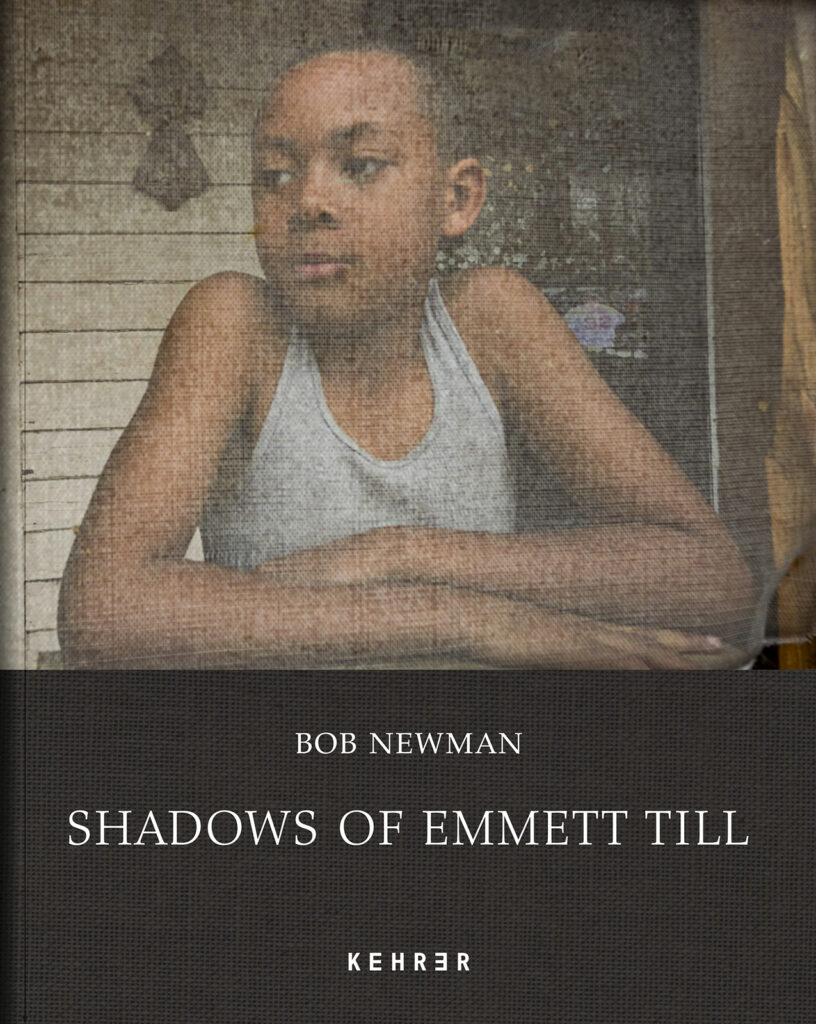 Shadows of Emmett Till
Shadows of Emmett Till
Bob Newman is always welcome to show new work in Shadow & Light Magazine (SLM), as he has on several occasions.
A few years back, SLM published his portfolio, “Irish Travellers.” As with any of his work I have seen, those images were made with intention and compassion as many of those pictured were children.
With his newest book, Shadows of Emmett Till, Bob seems to be leaping into subject matter about which he has known but seldom dug very deep.
To start this review, I will borrow some of the publisher’s (Kehrer) comments to offer background.
The Mississippi Delta has been called “The Most Southern Place on Earth,” a region of layered histories that collide with each other on a daily basis. It’s a place that defines America and Americans like no other part of the country – a culture entwined with slavery, poverty, and political and economic oppression. It is the land that gave birth to the creative genius of Muddy Waters and B.B. King, and to the horror of the Civil Rights-era murder of young Emmett Till (pictured).
Shadows of Emmett Till seeks to probe that complex past: picturing the energy of a landscape that has bred both hatred and creativity, interrogating the whiteness that has always held power in its grip in a place that is predominantly Black, and observing the many ways the shadow of Till’s murder still hangs over the Delta. This is work that breathes the Delta air and seeks to frame the region and its people in a 21st-century context, at a time when white America may be starting to finally come to terms with the sins of its past. It guides the viewer in an exploration of what the Delta was and what it now is.
Along the way, one can see the past spill into the present punctuated with troubling parallels to George Floyd and so many others.
One might wonder why I chose to include selected lyrics to the song, My Name is Emmett Till, by Emmylou Harris. The song is very important because when it was released as part of her album, “Hard Bargain” (2011), it reminded me of the story behind the song. Through the years I had done periodic research on Till’s murder and was appalled by the “not guilty” verdict handed down by the court.
 Even though the two white men confessed a little while later, the damage had already been done. As Harris writes, “The awful desecration/And the evidence of hate/You could not recognize me/The mutilation was so great.”
Even though the two white men confessed a little while later, the damage had already been done. As Harris writes, “The awful desecration/And the evidence of hate/You could not recognize me/The mutilation was so great.”
Till’s mother, Mamie, insisted that the funeral be held with an open casket, because she “wanted the whole wide world to see.”
“When Mamie Till Mobley decided the world must see what she had seen,” writes W. Ralph Eubanks, “and allowed photographer David Jackson to commemorate her son’s mutilated corpse—and publish it in the pages of Jet magazine—she did more than use the power of photography to capture the horror of a specific moment.”
The book is produced in two sections so that when it is opened you are given a choice of looking at the past (left side) with archival photos of the trial as well as other images of the mental and physical landscape of the area. The pictures in this section continue to include events from Till’s murder to other images of social injustice. In this section there is a picture of Congressman John Lewis crossing the Edmund Pettus Bridge, in 1965. He was 14 years-old at the time of the murder, and has said, Emmett Till was my George Floyd.” He was the same age as Till.
If you open the book on the right, you will be presented with more of a contemporary view of the south, featuring color photography by the author that illustrates different views of the same area that were threaded into Emmett Till’s too short stay.
As one turns the pages in this section, it isn’t too challenging to understand that, as Barrack Obama said, “The past isn’t dead and buried. In fact, it isn’t even dead,” in his 2008 speech, “A More Perfect Union.”
It is a challenge to write this review because it is not being written as I might another one. I am being flooded with imagery from the book as well as from my past readings of the events leading up to and including the murder of Emmett Till.
The shadows are there and the door will never be closed. Will Obama’s words ring true for the future. For that we will have to keep the channels and our minds open for that hoped-for outcome.
I can only imagine the work that went into this publication. I do know Bob is meticulous in his research and won’t let anything that isn’t true to the facts slide by his sharpened sense of deep observation. Producing a book that is wrought with so much emotion from “then” until even “now,” can serve to sway many from even beginning such a weighted project. It is a history lesson and it is a lesson in pursuing a passion.
It is a lesson that needs to be told again and again.
As it is I will place “Shadows of Emmett Till,” in my primary bookcase, one that I always have to walk by as I go from end-to-end in my casita. I don’t want it to hide from me, as many tomes are so wont to do. I want it front and center so I don’t forget. How about you?
Click here for additional information and to order book.
Views: 68
